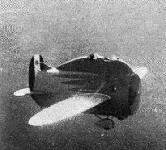
Flight, October 1932
A FLYING VENTURI TUBE
DESIGNED by Signor Stipa, one of the Caproni designers, and built by the Caproni Works at Milan, Italy, the machine shown in the photographs may best be described as a flying Venturi tube, its fuselage being physically and aerodynamically a counterpart, on a large scale, of this instrument. Structurally the Stipa-Caproni is a machine of straightforward all-wood construction, the Venturi-tube fuselage being in the form of a light open drum, with inner and outer surfaces covered with plywood, attached to an inner skeleton. The monoplane wing is of thin section and wire braced to the fuselage, and the undercarriage is of normal type. The tail organs are attached directly to the rear edges of the Venturi, where they are almost entirely in the slipstream from the airscrew. The engine, of 120 h.p., is mounted on a steel-tube framework inside the Venturi, and drives a tractor airscrew so placed that its tips just clear the forward edges of the Venturi. The occupants are attached, somewhat after the fashion of barnacles, to the top of the Venturi. Here they are out of the slipstream, get a very good view, and are well away from Mother Earth unless the machine should turn right over.
The reasons which led Signor Stipa to design this weird beast are slightly obscure, but it is believed that he expects low drag, extra stability and very effective rudder and elevator control, while tail flutter and "buffeting" should certainly not take place. One serious snag seems to be that small boys can (and probably will) very easily "stow away" inside the Venturi without the pilot knowing it. They would have a slightly uncomfortable time, but then what boy minds that?
Actually it is thought that Signor Stipa regards this machine as a flying model of much larger aircraft. He points out that airscrew diameter increases, for the same revolutions, as the fifth root of the power, and that therefore in large machines the Venturi tubes would be proportionally much smaller, and could be housed, in a multi-engined machine, inside a thick cantilever wing.
The experimental machine has a span of 13.3 m. (46.9 ft.), a wing area of 19 m.2 (204.5 sq. ft.), a tare weight of 600 kg. (1,323 lb.) and a gross weight of 800 kg. (1,763 lb.). No performance figures are available.
- Flight, October 1932
A FLYING VENTURI TUBE
Фотографии
-
Flight 1933-09 / Flight
LOOKS A BIT FISHY! It is not, however, a photo of a tropical fish taken in the Zoo Aquarium, but an aerial view of the latest Stipa Caproni flying "Venturi tube" - a previous model of which was briefly described in "Flight" of October 20, 1932.
- Фотографии


